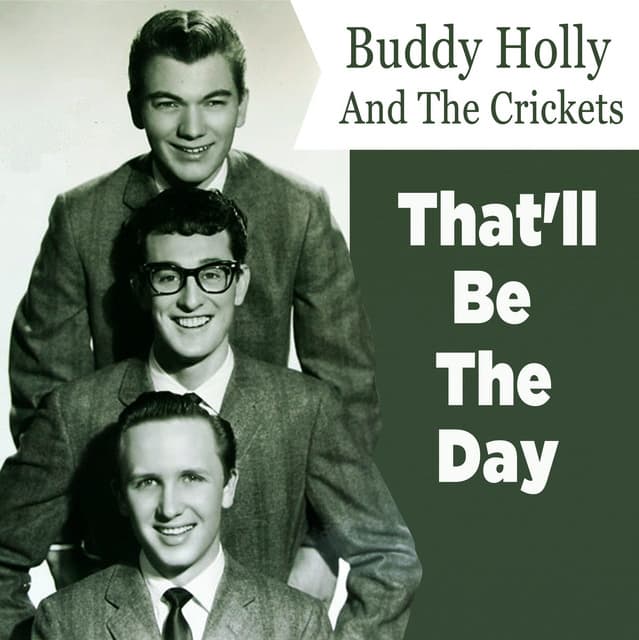
“That’ll Be the Day” by Buddy Holly: The Birth of a Rock ‘n’ Roll Classic
When Buddy Holly and Jerry Allison penned the song “That’ll Be the Day,” little did they know they were crafting a rock ‘n’ roll anthem that would resonate through the ages. First recorded in 1956 by Buddy Holly and the Three Tunes, the song didn’t initially catch fire. However, when Buddy Holly and the Crickets revisited and re-recorded the track in 1957, it became an instant sensation. This rendition of “That’ll Be the Day” not only catapulted Holly to stardom but also secured its place as a cornerstone of rock ‘n’ roll history.
The story behind the song is as legendary as the tune itself. In June 1956, Holly, alongside his older brother Larry, Jerry Allison, and Sonny Curtis, watched the John Wayne film The Searchers. Inspired by Wayne’s repeated use of the phrase “that’ll be the day,” Holly and Allison channeled that cinematic moment into their songwriting, creating a track that encapsulated the youthful rebellion and romantic optimism of the era.
The initial 1956 recording session at Bradley Studios in Nashville didn’t meet Decca Records’ expectations, and the song was shelved. It wasn’t until Holly formed the Crickets and re-recorded the song in 1957 that it found its true voice. With Norman Petty at the production helm—credited as a co-writer despite his lack of involvement in the song’s composition—the 1957 version struck a chord with the public. This recording achieved widespread success, and by 1957, “That’ll Be the Day” had climbed to the top of the charts, solidifying Holly’s status as a pioneering figure in rock music.
The success of the 1957 recording was monumental. It was certified gold by the Recording Industry Association of America (RIAA) in 1969 for over a million US sales, an impressive feat that underscored the song’s enduring popularity. Further cementing its legacy, “That’ll Be the Day” was inducted into the Grammy Hall of Fame in 1998 and placed in the National Recording Registry in 2005, recognized as a recording of cultural, historical, and aesthetic significance.
The impact of “That’ll Be the Day” extended beyond Holly’s career. It was the first song recorded by the Quarrymen, a skiffle group from Liverpool that would eventually evolve into the Beatles. This fact alone highlights the song’s influential role in shaping the sound and direction of future musical legends.
In conclusion, “That’ll Be the Day” is not just a song; it’s a milestone in the history of rock ‘n’ roll. From its cinematic inspiration to its journey through various recordings, the track embodies the spirit of a generation and the timeless appeal of Buddy Holly’s music. Its success on the charts in 1957 marked the beginning of Holly’s illustrious career and left an indelible mark on the fabric of rock music. As we listen to it today, we are reminded of a time when rock ‘n’ roll was young and full of promise, with Buddy Holly leading the charge with his unforgettable hit.